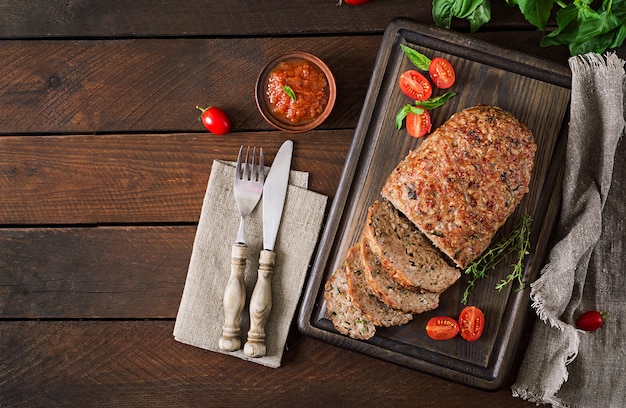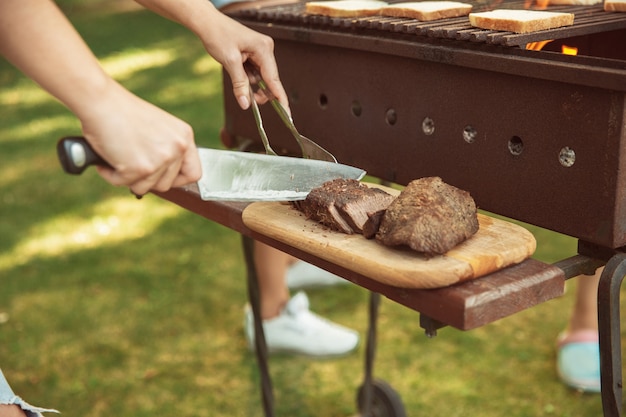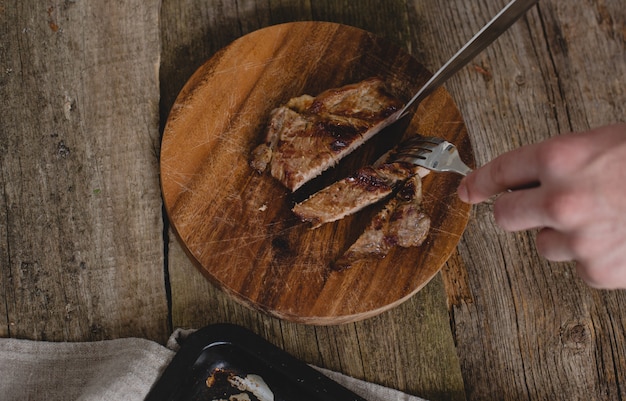Part 1: Choosing the Right Cut

Let's start with the foundation: the cut of meat. You wouldn't build a house without the right materials, and the same goes for a delicious steak. Each cut has its own unique characteristics, affecting its flavour, texture, and cooking time.
The Classics: Where Flavor and Texture Meet
These cuts are the backbone of any steak lover's repertoire. They're tried and true, offering a balance of flavour and texture that's hard to beat.
- Sirloin: This is a great all-rounder, known for its rich flavour and good marbling. It's usually more affordable than other cuts, making it a popular choice for weeknight dinners. It's also versatile, working well with both grilling and pan-frying. Think of it as the reliable friend you can always count on.
- Rib Eye: Now, this is what I call a luxury cut. It's incredibly marbled, resulting in a succulent, buttery texture that practically melts in your mouth. It's definitely a treat, but be warned, it can be pricier than other cuts. Think of this as the indulgent treat you save for special occasions.
- new york strip: This cut has a bold, beefy flavour and a nice, even texture. It's a great choice for grilling and pan-frying. It's a bit leaner than a rib eye, but still plenty flavorful. Imagine this as the confident, bold friend who knows how to make a statement.
- filet mignon: This is the ultimate in steak luxury. It's the most tender cut, offering a melt-in-your-mouth experience that's pure decadence. But, be warned, it can be quite expensive. It's the glamorous, sophisticated friend you admire from afar.
Exploring Beyond the Basics: Adventures in Flavor
Don't be afraid to branch out and try other cuts! You might discover a new favourite. Here are a few to explore:
- T-bone: This cut has a unique "T" shape, featuring both tenderloin and strip steak. It's a great option if you want a bit of variety in one piece. Imagine this as the adventurous friend who always brings something new to the table.
- Porterhouse: Similar to a T-bone, but larger and with a thicker strip steak portion. This cut is a real showstopper for dinner parties. It's the dramatic, attention-grabbing friend who knows how to make an entrance.
- flank steak: This cut is leaner and tougher than other cuts, but it's packed with flavour. It's best sliced thinly against the grain and grilled quickly. Think of this as the quiet, but powerful friend with a hidden depth.
Part 2: Mastering the internal temperature: Decoding the Doneness

Okay, so you've chosen your cut. Now, it's time to talk about doneness. This is where things get a little tricky. You've got to understand how to achieve your desired level of doneness, and that means mastering the art of internal temperature.
The Doneness Scale: From Rare to Well Done
This is what you've been waiting for. Here's the breakdown of the different doneness levels and their corresponding internal temperatures (using a meat thermometer):
| Doneness | Internal Temperature (°F) | Description |
|---|---|---|
| Rare | 125-130°F | The centre is cool and red, with a slightly warm outer ring. Think of it as the daring, adventurous friend who always takes risks. |
| Medium-Rare | 130-135°F | The centre is warm and red, with a slightly pink outer ring. Imagine it as the balanced, sophisticated friend who knows how to enjoy the finer things in life. |
| Medium | 135-140°F | The centre is warm and pink, with a slightly brown outer ring. It's the reliable, dependable friend who's always there for you. |
| Medium-Well | 140-145°F | The centre is warm and slightly pink, with a mostly brown outer ring. This is the cautious, sensible friend who prefers to play it safe. |
| Well-Done | 145-150°F | The centre is warm and completely brown, with a crispy outer ring. Think of this as the practical, no-nonsense friend who always gets the job done. |
Tips for Achieving the Right Doneness: From Precision to Patience
- Use a Meat Thermometer: This is essential for getting accurate results. You wouldn't bake a cake without a thermometer, right? It's the same principle here.
- Rest the Steak: After cooking, let your steak rest for 5-10 minutes before slicing. This allows the juices to redistribute, resulting in a more tender and flavorful steak. Think of it as giving the steak a moment to relax and unwind after its culinary journey.
- Don't Overcook! Steak is best enjoyed at a slightly lower doneness than you might think. Trust me, medium-rare is where it's at. It's like allowing your steak to express its full potential, showcasing its natural juiciness and tenderness.
Part 3: The Art of the Sear: Unlocking Flavour and Texture

Alright, let's talk about that delicious crispy crust that gives your steak its character. The sear is the key to unlocking incredible flavour and texture.
The Pan-Searing Technique: A Masterclass in Kitchen Alchemy
I'm a big fan of pan-searing. It's easy to control the heat and allows for a really nice, even sear. Here's how you do it:
- Get the Pan Hot: Use a heavy-bottomed pan like cast iron or stainless steel and heat it over medium-high heat. You want the pan smoking hot before you add the steak. Imagine the pan as a stage, ready to showcase the steak's transformation.
- Pat the Steak Dry: This ensures a crisp crust. Use paper towels to dry the steak thoroughly. Think of this as prepping the steak for its starring role, ensuring a flawless performance.
- Season Liberally: Don't be shy with the salt and pepper. Season generously on both sides before searing. Think of this as adding the final touch of makeup before the show begins.
- Sear for 2-3 Minutes per Side: Don't overcrowd the pan. Sear the steak for 2-3 minutes per side, or until a nice crispy crust develops. Imagine this as the opening act, where the steak's true flavour and texture begin to emerge.
- Flip Once: I know it's tempting to keep flipping, but just resist the urge. Flip the steak only once. Think of this as a dramatic reveal, showcasing the steak's transformation.
Beyond Pan-Searing: Grilling and Broiling
For those who prefer outdoor grilling, a hot grill can create a beautiful char. Just make sure your grill grates are clean and hot before adding your steak.
Broiling is another option if you want a quick and easy method. Just remember to keep a close eye on your steak, as it can cook quickly under the broiler.
Part 4: The Finishing Touches: Elevating Your Steak to New Heights
We're almost there! Your steak is seared, cooked to perfection, and resting. Now, it's time to add those final touches that will make it truly special.
Herbs and Spices: A Symphony of Flavour
A sprinkle of fresh herbs and a touch of spice can elevate your steak to new heights. Experiment with different combinations. Here are a few classics:
- Rosemary and Garlic: A classic combination that complements the richness of the steak. It's like a timeless duo, harmonizing perfectly with the steak's melody.
- Thyme and Peppercorn: A more rustic flavour profile, like a folk song that adds a touch of earthiness and spice.
- Chives and Lemon: A fresh and bright flavour combination, a lively pop tune that adds a touch of acidity and freshness.
Sauces and Glazes: A Culinary Encore
A good sauce can really make your steak shine.
- Compound Butter: This is a simple and elegant way to add flavour. Just mix your favourite herbs and spices with softened butter and spread it on top of the cooked steak. Think of this as a simple, yet elegant, encore that adds a touch of richness and depth.
- Red Wine Sauce: This classic sauce adds a rich, umami flavour to your steak. Imagine this as a powerful ballad that elevates the steak to new heights of flavour.
- Béarnaise Sauce: A rich and creamy sauce made with egg yolks, butter, and tarragon. A sophisticated, decadent symphony that completes the steak's culinary journey.
Sides: The Perfect Counterpoint
Don't forget about the sides! They complement the steak beautifully.
- mashed potatoes: A classic and comforting side for any steak. Like a warm hug, it complements the steak's boldness and richness.
- Roasted Vegetables: Add some colour and flavour to your plate with roasted vegetables like asparagus, Brussels sprouts, or carrots. They're like a vibrant chorus, adding a touch of sweetness and acidity to the steak's melody.
- Green Salad: A light and refreshing contrast to the richness of the steak. A light and airy interlude that cleanses the palate and adds a touch of freshness.
Part 5: Troubleshooting: Facing Culinary Challenges Head-On
Okay, let's face it, things don't always go perfectly smooth in the kitchen. Here's a quick guide to some common steak cooking problems and how to solve them.
Problem: Steak is sticking to the pan.
Solution: Make sure the pan is hot enough and that the steak is patted dry. Use a high heat-resistant oil, like avocado or grapeseed oil. Think of this as ensuring the stage is properly prepared for the steak's performance, allowing it to shine without any hiccups.
Problem: Steak is overcooked.
Solution: This one's a bummer, but it's not the end of the world. If your steak is overcooked, it might be a bit tough, but it's still edible. Just try to slice it thinly against the grain to make it more tender. Think of this as improvising your performance, making the best of a slightly overcooked steak.
Problem: Steak is undercooked.
Solution: If your steak is undercooked, don't worry. Just pop it back on the heat for a few more minutes to finish cooking. Keep a close eye on it and make sure it reaches your desired doneness. Think of this as adjusting the performance, ensuring the steak reaches its full potential.
Part 6: Mastering the Techniques: From Beginner to Expert
Ready to take your steak game to the next level? Here are some tips and techniques to help you become a true steak master:
1. reverse searing: The Slow and Steady Approach
Reverse searing is a great technique for getting a perfectly cooked steak, especially if you're new to steak cooking.
- Cook Low and Slow: Cook the steak in a low-temperature oven (around 250°F) until it reaches the desired internal temperature. This ensures even cooking throughout. Think of this as a gentle warm-up, preparing the steak for its grand finale.
- Searing for Perfection: Once the steak is cooked to your liking, sear it in a hot pan or on the grill for a few minutes to create that beautiful crust. Think of this as the final crescendo, bringing the steak's flavour and texture to a peak.
2. Sous Vide: Precision Cooking at its Best
Sous vide is a technique that involves cooking food in a water bath, ensuring incredibly precise temperature control.
- Temperature Control: Sous vide allows you to cook your steak to the exact desired temperature, resulting in a perfectly cooked steak every time. It's like having a backstage crew meticulously controlling the temperature, ensuring a flawless performance.
- Tender and Juicy: sous vide cooking creates a tender and juicy steak by ensuring even cooking throughout. Think of it as a backstage massage, relaxing the steak and ensuring its tenderness.
3. The Importance of Resting: Letting the Steak Relax
Resting is a crucial step in the steak cooking process.
- Redistributing Juices: When you rest your steak, the juices redistribute throughout the meat, resulting in a more tender and flavorful steak. Think of it as allowing the steak to recover and rehydrate after its culinary journey.
- Letting the Steak Relax: Allowing the steak to rest helps it relax and release some of the tension, making it easier to slice. Think of this as giving the steak a moment to calm down and unwind before its grand finale.
Part 7: steak recipes: From Classic to Creative
Okay, enough theory. Let's get down to business. Here are a few steak recipes to get you started.
1. Classic grilled steak with Garlic Herb Butter
This is a simple and classic steak recipe that's perfect for a weeknight dinner.
- Ingredients:
- 1 (1-inch thick) boneless ribeye steak
- 1 tablespoon olive oil
- 1 clove garlic, minced
- 1 tablespoon chopped fresh parsley
- 1 teaspoon chopped fresh thyme
- 1/4 teaspoon salt
- 1/4 teaspoon black pepper
- Instructions:
- Preheat grill to medium-high heat.
- In a small bowl, combine garlic, parsley, thyme, salt, and pepper.
- Rub the steak with olive oil and season with the herb mixture.
- Grill the steak for 4-6 minutes per side, or until cooked to your liking.
- Let the steak rest for 5-10 minutes before slicing.
2. pan-seared steak with Creamy Mushroom Sauce
This recipe features a rich and flavorful mushroom sauce that pairs perfectly with the steak.
- Ingredients:
- 1 (1-inch thick) boneless ribeye steak
- 1 tablespoon olive oil
- 1/2 teaspoon salt
- 1/4 teaspoon black pepper
- 1/2 cup sliced mushrooms
- 1/4 cup heavy cream
- 1 tablespoon chopped fresh parsley
- Instructions:
- Preheat a cast iron skillet over medium-high heat.
- Season the steak with salt and pepper.
- Heat the olive oil in the skillet and sear the steak for 2-3 minutes per side, or until cooked to your liking.
- Remove the steak from the skillet and set aside.
- Add the mushrooms to the skillet and cook until softened, about 5 minutes.
- Pour in the heavy cream and simmer for 1-2 minutes, or until thickened.
- Stir in the parsley and season with salt and pepper to taste.
- Return the steak to the skillet and coat with the sauce.
- Serve immediately.
Part 8: FAQs: Unveiling the Mysteries of Steak Cooking
Here are some common questions about steak cooking:
1. What's the best way to tell if a steak is done?
The most reliable way to check doneness is with a meat thermometer. It's crucial for achieving your desired level of doneness without overcooking the steak. It's like having a backstage monitor, giving you a clear picture of the steak's internal temperature.
2. How do I prevent my steak from becoming tough?
Cooking time is key. Avoid overcooking your steak. Use a meat thermometer to ensure it reaches your desired internal temperature. Also, remember to rest the steak after cooking to allow the juices to redistribute, making it more tender. Think of this as giving the steak a chance to cool down and relax, preserving its natural tenderness.
3. What kind of oil should I use for searing?
Choose a high heat-resistant oil with a high smoke point, like avocado oil, grapeseed oil, or peanut oil. These oils will withstand the high heat of searing without burning. They're like the backstage crew, ensuring a smooth performance without any unexpected flare-ups.
4. Can I cook steak in the oven?
Yes, you can cook steak in the oven. Reverse searing is a great method for even cooking in the oven. Cook the steak in a low-temperature oven until it reaches your desired internal temperature, then sear it on the stovetop or grill for a crispy crust. Think of this as a different stage, allowing you to control the heat and achieve a perfectly cooked steak.
5. How do I store leftover steak?
Leftover steak should be stored in the refrigerator in an airtight container. It can be kept for 3-4 days. You can reheat it in a pan or in the oven. Think of this as giving the steak a well-deserved rest before its encore performance.
Everyone is watching

How to Cook Frozen Lobster Tails Perfectly: A Step-by-Step Guide
RecipesLobster. Just the word conjures up images of lavish meals, special occasions, and a taste of luxury. But let's...

Pigs in a Blanket Cooking Time: How Long to Bake for Perfect Results
RecipesAh, pigs in a blanket. Just the name conjures up images of those delightful little parcels of crispy pastry en...

Pork Fillet Cooking Time: How Long to Cook It Perfectly
RecipesPork fillet, or tenderloin as it's sometimes called, is a real favourite in our house. It's so versatile, and...

The Ultimate Guide to Tender, Juicy Pulled Pork
RecipesRight, let's talk pulled pork. It's one of those dishes that just screams "comfort food," doesn't it? I mean...

The Ultimate Guide to Cooking Sweet Potatoes: From Roasting to Mashing
RecipesSweet potatoes. Just the name conjures up images of warm, comforting dishes, bursts of vibrant color, and a to...
